Part of a series of articles titled Yellowstone Science - Volume 27 Issue 1: Vital Signs - Monitoring Yellowstone's Ecosystem Health.
Next: Sneak Peek
Article
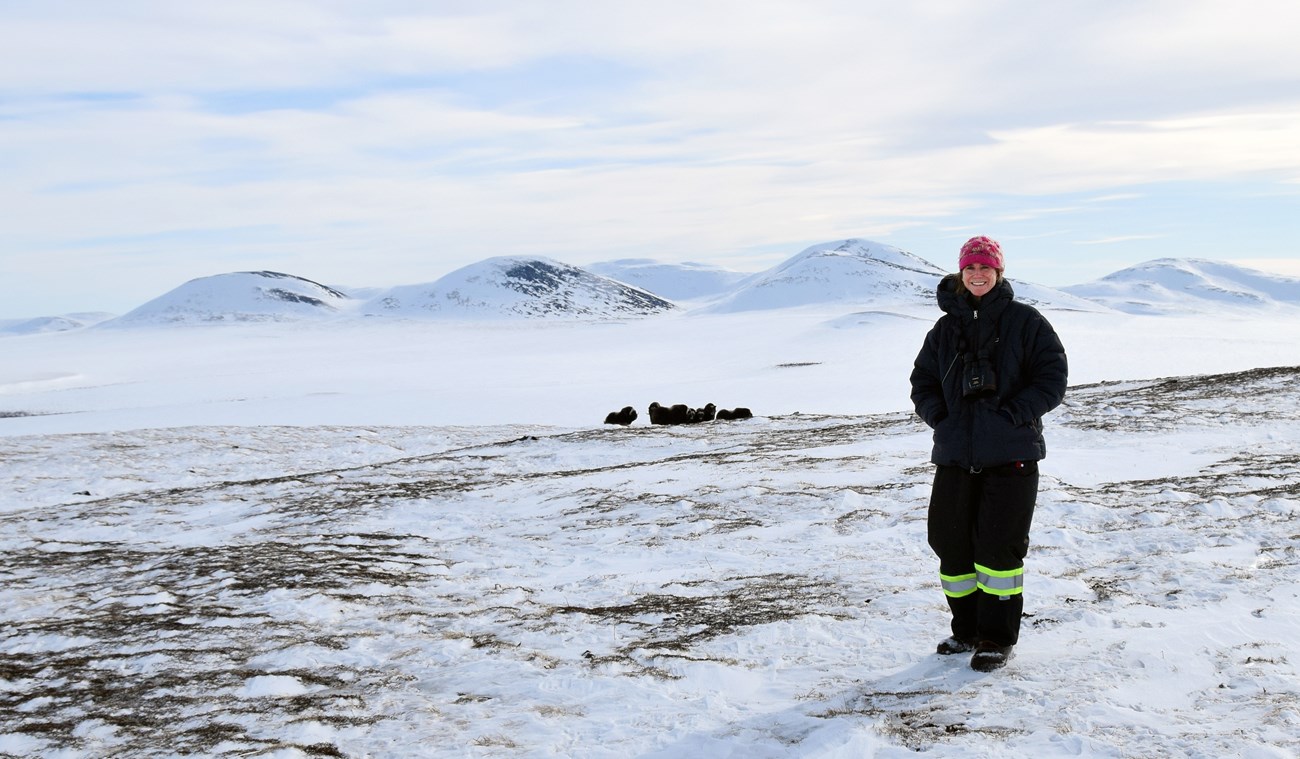
NPS Photo - J. Lawler
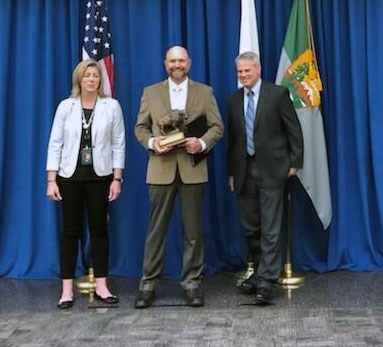
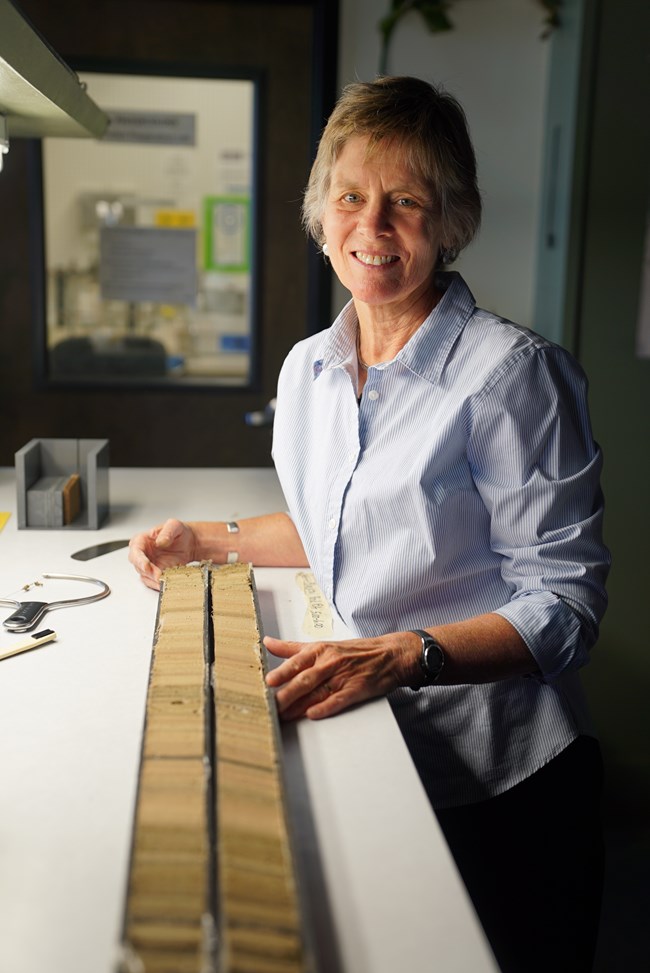
Photo - S. Tobias
by Denise Hoepfner, MSU News Service
A Montana State University professor of Earth sciences whose work over the past four decades has greatly impacted the fields of geology, geography and ecology and advanced our understanding of the processes shaping Yellowstone National Park has been elected by her peer scholars to be a member of a distinguished national organization committed to the advancement of science.
Cathy Whitlock is among the newest members of the U.S. National Academy of Sciences, one of the highest honors a scientist can receive. According to the academy’s announcement, published May 1, 2018, members are elected in recognition of their distinguished and continuing achievements in original research, and membership is widely accepted as a mark of excellence in science.
Whitlock is the first scientist from a Montana institution to earn the distinction. She was formally inducted at the 2019 NAS annual meeting in Washington, D.C.
“I am thrilled and honored by my election to the NAS and for the opportunity to represent my discipline at a national level,” said Whitlock, a professor in the Department of Earth Sciences in MSU’s College of Letters and Science and a fellow of the Montana Institute on Ecosystems.
Over the course of her nearly 40-year career, Whitlock has produced a broad body of groundbreaking research that has led her to national and international recognition for her scholarship and leadership in the field of past climate and environmental change.
She was lead author of the 2017 Montana Climate Assessment, a report released by the Institute on Ecosystems that focuses on climate trends and their consequences for Montana’s water, forests and agriculture. The first in a planned series, the assessment is the result of two years of research conducted in collaboration with the Montana Climate Office, Montana Water Center and Montana State University Extension.
Whitlock has published more than 190 peer-reviewed journal articles and book chapters on the topics of vegetation, fire and climate history in leading scientific journals such as the Proceedings of the National Academy of Sciences, Nature, Science, Ecology, PLOS One, and BioScience, among others.
Additionally, she has been recognized for her outstanding contributions with numerous awards and appointments, including her selection as a fellow of the Geological Society of America and of the American Association for the Advancement of Science. In 2014, she received the international E.O. Wilson Biodiversity Technology Pioneer Award, which honors individuals who have made significant contributions to the preservation of biodiversity.
Upon joining the MSU faculty in 2004, Whitlock established the MSU Paleoecology Lab. At MSU, she served as founding director of the Institute on Ecosystems from 2011 to 2017. She is currently the lead investigator on the National Science Foundation Wildfire Partnership in Research and Education (WildFIRE PIRE) project and is the MSU co-investigator for Montana’s NSF Experimental Program to Stimulate Competitive Research (EPSCoR RII Track 1) project.
Whitlock said she is grateful for the support she has received at the state’s flagship research university, and for the “endless opportunities for research and learning that come with being in Yellowstone’s backyard.”
“MSU is an exceptionally collaborative home for researchers and I’m grateful for the support that I’ve received from this university through the years."
“Throughout my career, I’ve been fortunate to have had inspiring and supportive mentors who encouraged me along the way, dynamic and engaging colleagues who have kept the science interesting and fun, and some of brightest graduate students anywhere,” Whitlock said. “Together, we’ve shared amazing moments of discovery, lots of challenging but unforgettable field experiences, and many moments of laughter.”
Given limited funding, logistical constraints, and increased threats to Yellowstone cutthroat trout (YCT), a group of federal, state, and conservation organization biologists collaborated to create a prioritized framework for preserving the species within their historic range. With focus on the Greater Yellowstone Area (GYA), the biologists worked to develop a framework based on data collated by the Multistate Interagency Yellowstone Cutthroat Trout Work Group.
The results of their study were published online in June 2018 in the journal Fisheries (“A Portfolio Framework for Prioritizing Conservation Efforts for Yellowstone Cutthroat Trout Populations”). In brief, the framework helps fisheries managers prioritize regions where conservation efforts may have the greatest benefit to YCT.
The biologists determined genetic purity, resiliency, threats from non-native species, and climate change vulnerability were the most important variables to include in their framework. Their results found 70% of YCT populations were either slightly hybridized or occurred in waters with non-native species, demonstrating a significant risk to YCT residing in waters in or adjacent to non-natives. The biologists also found 40% of YCT populations lived in habitats that offered little refuge in the face of changing climate. Notably, even YCT in higher-elevation mountainous areas in Yellowstone National Park are at risk from a changing climate.
Through their study, the authors ranked 36% of existing populations as a high priority for conservation. However, only 14% of current YCT populations were shown to be secure from near-term population threats. The authors hope this framework provides a basis for focused, multi-agency YCT conservation efforts in GYA locations that have high chances of success. The results of the framework may also provide a rationale for securing funding and directing actions that focus on bolstering individual populations and the species as a whole.
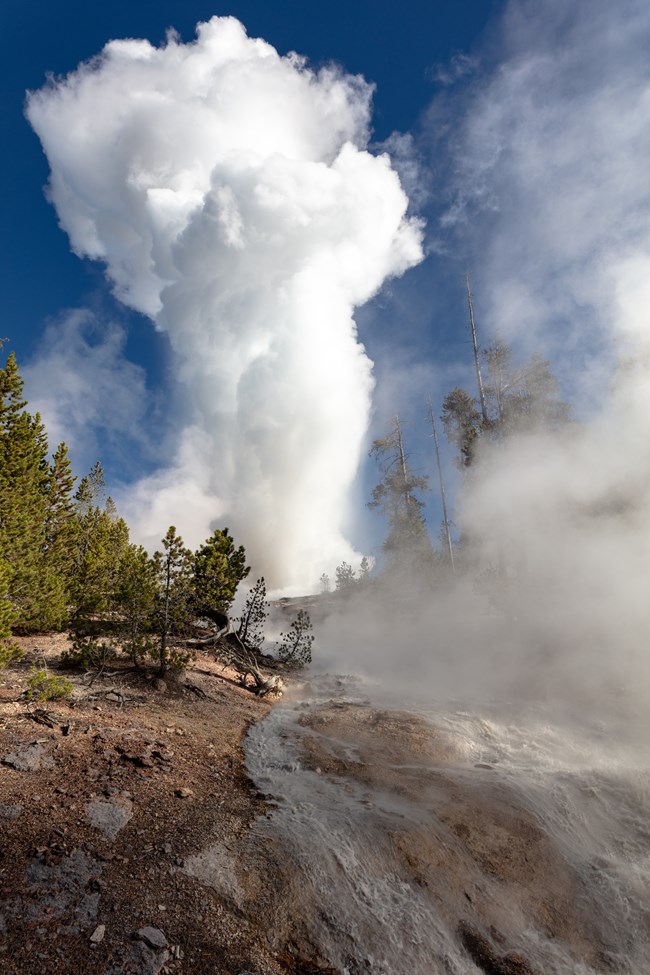
by Christie Hendrix & Jefferson Hungerford
Norris Geyser Basin’s Steamboat Geyser, home of the world’s tallest active geyser, spent much of the last 12 months showing off its eruption skills. While less famous than Yellowstone’s Old Faithful Geyser, Steamboat is known for erupting up to 350 feet (91 m) high and has a steam phase that sometimes lasts for days. Witnesses often report that eruptions sound like thunder or a freight train. Steamboat Geyser erupts infrequently and at unexpected intervals. In some years, it erupts only once per year; at other times it goes years without eruptions. March 15, 2019 marked the one-year anniversary of an amazing pulse of activity resulting in 41 eruptions!
These eruptions have been a surprising treat for park visitors and geyser enthusiasts alike. While the activity at Steamboat has generated much public interest, numerous eruptions in a single year are not outside the historic norm. Over a span of four years starting in 1963, Steamboat Geyser erupted 26, 29, 22, and 10 times a year, respectively. And in 1982 and 1983, there were 12 and 23 eruptions, respectively. Since that time, Yellowstone has only seen 20 eruptions in 31 years. Until now…
Scientists are investigating what triggers large numbers of eruptions at Steamboat Geyser in a single year. Park geologists, along with their Yellowstone Volcano Observatory partners, are currently combing through seismic, GPS, temperature, and water discharge data to identify signals that indicate changes in geyser activity.
by Christie Hendrix
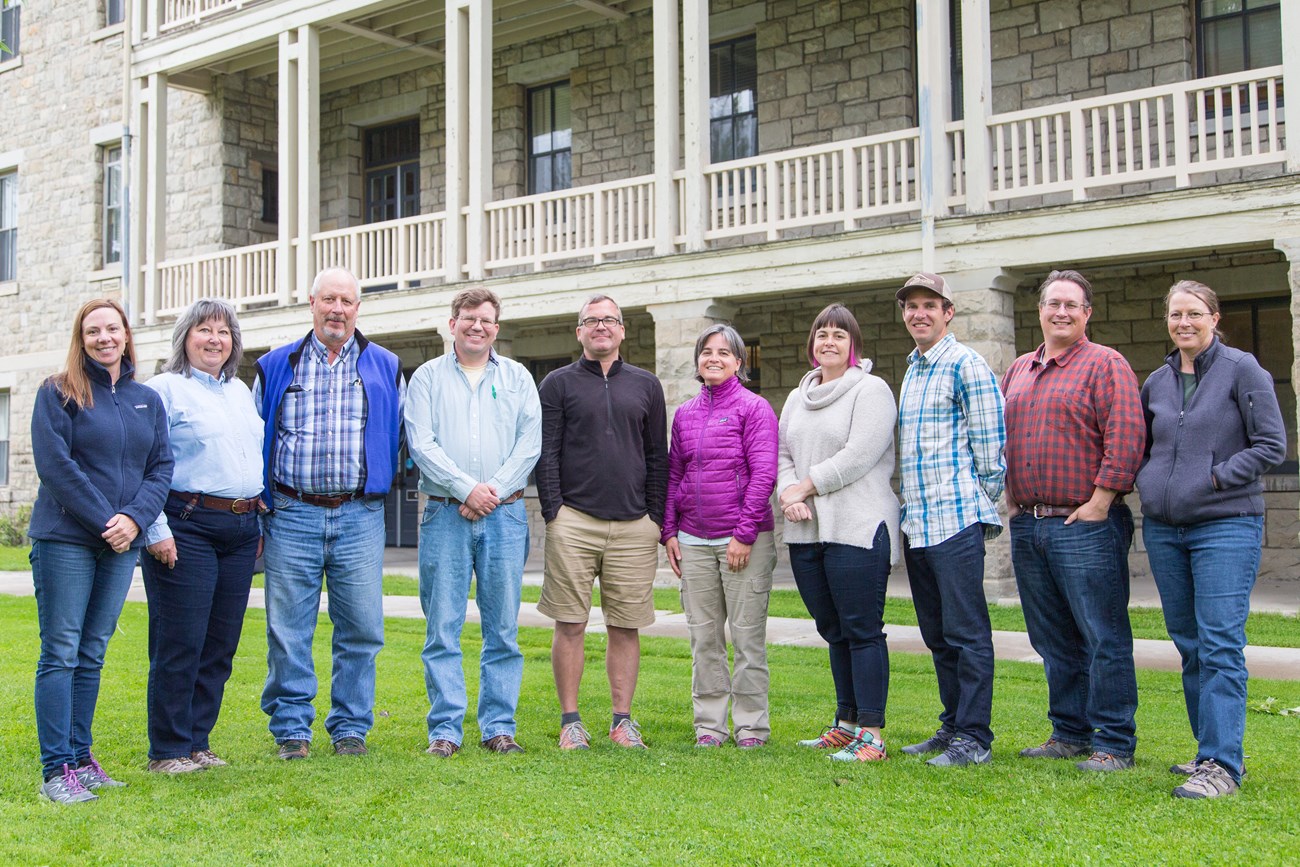
Yellowstone National Park (YNP) supports one of the most significant aquatic ecosystems in the U.S. Headwater streams and rivers emerge from the park and join to become three of America’s most important waterways and ultimately flow into the Pacific and Atlantic oceans: the Yellowstone River, the Missouri River and the Snake River. At the heart of YNP lies Yellowstone Lake—the largest alpine body of water in North America. The park encompasses about 2.25 million acres, of which 5% is covered by water including more than 220 lakes and 2,650 miles of streams.
A principal threat to Yellowstone’s aquatic resources and the natural ecosystems they support are the numerous aquatic invasive species (AIS) advancing across the U.S. At risk is permanent loss of these resources because once AIS are introduced and become established, there is often no way to completely remove them. AIS are often costly to manage, and they can persist and cause irreversible harm. The introduction of certain AIS species could result in complete loss of world-class trout fisheries, closures of waters to public use, and disruption of habitat and natural ecological functions that impacts important birds and mammals. Lake trout in Yellowstone Lake are a prime example of the potential far-reaching ecological and economic damage that can be caused by an aquatic invader.
Effective prevention, early detection, and control of any further introductions of AIS is required to preserve YNP and downstream waters for future generations. However, prevention efforts are challenging since more than four million people annually visit Yellowstone. Waters where boating is allowed are exposed to watercraft from all 50 U.S. states, Mexico, Canada, and occasionally countries outside North America.
To bolster aquatic resource protection efforts, YNP initiated a Science Information Sharing Panel (SISP) comprised of external agency, tribal and university AIS experts. Panel members include Kim Bogenschutz (Iowa State AIS Coordinator), Robyn Draheim (Independent contractor), Erik Hanson (Confederated Salish & Kootenai Tribes, AIS Coordinator), Eric Hellquist (State University of New York Oswego, Aquatic Botany Professor), Chris Jerde (UC Santa Barbara, Aquatic Invasive Species Professor), Adam Sepulveda (US Geological Survey, Aquatic Invasive Species Biologist), and Theresa Thom (Pacific Region, U.S. Fish & Wildlife Service). The SISP met in June 2018 to evaluate the strengths, weaknesses, and gaps of Yellowstone’s AIS program and provide feedback to aid future planning for the AIS program. External and independent peer reviews, such as the SISP, are a hallmark of good science and a strong program and provide evidence of accreditation to stakeholders and the public.
The SISP concluded that Yellowstone’s AIS program currently has a strong and effective watercraft inspection component and a non-native trout control component. The SISP identified numerous potential improvements to the safety, infrastructure, and communications of the watercraft inspection program that would strengthen prevention efforts and enhance visitor experience. However, a robust and effective AIS program requires additional components, which YNP currently lacks, to prevent, detect, and control AIS introductions and spread. These components include rapid response, risk assessment, monitoring and surveillance, outreach and education, infrastructure, operations, regulations, and permanent funding. Program expansion should also consider efforts to prevent introduction and spread from pathways (e.g., anglers who wade could spread AIS currently found in YNP) other than watercraft. The SISP has provided YNP with a detailed roadmap of how to incrementally grow these additional components of an AIS program without weakening the watercraft inspection and non-native trout control programs. YNP staff recognized and are grateful for the exceptional work and robust, highly implementable recommendations provided by the AIS SISP. Shortly after the panel left the park in June, YNP staff took immediate action to implement many SISP recommendations. The panel’s final report, anticipated in Fall 2019, will continue to guide improvements to YNP’s AIS program well into the future.
Part of a series of articles titled Yellowstone Science - Volume 27 Issue 1: Vital Signs - Monitoring Yellowstone's Ecosystem Health.
Next: Sneak Peek
Last updated: September 16, 2019